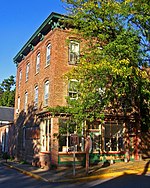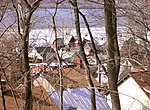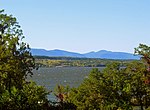Kip-Beekman-Heermance Site
Archaeological sites on the National Register of Historic Places in New York (state)Buildings and structures in Dutchess County, New YorkDutchess County, New York Registered Historic Place stubsNational Register of Historic Places in Dutchess County, New YorkUse mdy dates from August 2023

Kip-Beekman-Heermance Site is a historic archaeological site located at Rhinebeck, Dutchess County, New York.
Excerpt from the Wikipedia article Kip-Beekman-Heermance Site (License: CC BY-SA 3.0, Authors, Images).Kip-Beekman-Heermance Site
Rhinecliff Road,
Geographical coordinates (GPS) Address Nearby Places Show on map
Geographical coordinates (GPS)
| Latitude | Longitude |
|---|---|
| N 41.926111111111 ° | E -73.945833333333 ° |
Address
Rhinecliff Road 365
12572
New York, United States
Open on Google Maps










